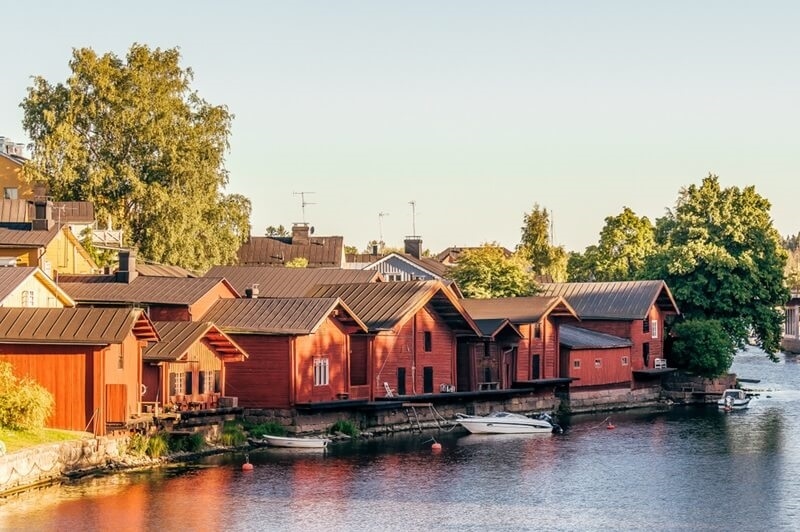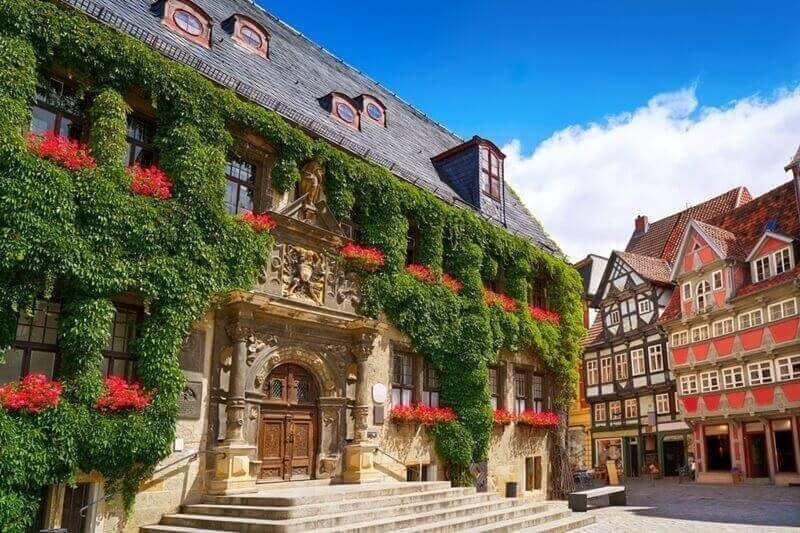
The magic found in a small European town is not loud or flashy; instead, they are quiet and calm. All the roads echo history, morning markets are filled with local chatter, and small cafes are where the time passes slowly. The small towns do not appear in flashy travel brochures or the top-ten lists and that is exactly the reason that these places feel so special.
The moment you arrive in a small European town, you get a feeling of calmness. These towns have an extremely inviting nature that makes you feel like a guest instead of a visitor, and every moment feels like you are reading a storybook. All the small European towns listed in this blog has something rare and authentic which makes them a must-visit place for every traveler.
Beauty in Europe is not only reserved for grand capitals or sprawling cities. Some of the prettiest small towns in Europe remain a secret even in today’s digital age. These towns have a charm of their own.
The prettiest small towns in Europe that you should visit at least once are listed below:
With colorful timbered houses and flower-lined canals, it is often called a real-life painting.
Nestled between fjords and steep mountains, this fishing village offers postcard-worthy views in every direction.
Known for its whitewashed buildings and blue domes, but still feels quiet in the early mornings before crowds arrive.
With its island church and castle on a cliff, it is the kind of place that stays in memory long after the visit ends.
With over 1,000 half-timbered buildings, it is one of the best-preserved medieval towns in Europe.
Each of these towns offers more than beauty. They hold on to their history, their identity, and their rhythm. They do not demand attention from the outer world; they simply deserve it.
Top Pick: Uncover Prague’s Historic Old Town and Castle Views

What defines a European small town is not just its size, but its soul. There is a rhythm to life here that rarely changes. Morning bread is bought fresh, not packaged. Greetings are shared with eye contact and not emojis; time stretches, but somehow that feels like a luxury.
Some common features of daily life include:
There is little hurry. No one rushes. And visitors often find themselves adapting to this slower pace without even realizing it. It’s not a vacation style — it’s a lifestyle.
Beyond the well-known tourist maps, some of the most charming small towns in Europe are still waiting to be discovered. These are not the kind of places that appear in major films or luxury travel ads. They are quiet, often remote, and always genuine.
Here are a few small towns in Europe that are worth exploring in 2025:
With ancient walls and bay views, it is a mix of medieval mystery and natural beauty.
A colorful fishing village perched along the Ligurian coast, still unknown to many tourists.
A former mining town surrounded by green hills and full of Baroque charm.
One of the country’s best-preserved medieval villages, rich in wool trade history and Tudor architecture.
Sitting by the River Meuse with cliffs rising behind it, this town looks like a fairytale caught between rock and water.
What makes these small towns in Europe so special is not only their scenery, but also their sense of preservation. They have chosen not to evolve too quickly and by doing so, these small European towns offer unique cultural experiences.
Every small European town shares a few common traits. There’s almost always a central square, usually paved in stone, where life gathers throughout the day. Around it, you’ll find cafés, bakeries, and perhaps a quiet bookstore. Local events — whether seasonal markets, folk dances, or religious processions — bring everyone together.
Key characteristics include:
Often protected by national heritage laws, buildings remain unchanged for centuries.
Meals are tied to the region. Recipes are passed down, not bought online.
Instead of global chains, you will find small stores operated by generations of the same family.
Everyone knows everyone. And visitors are welcomed not as consumers, but as guests.
These towns offer a kind of groundedness that’s hard to find elsewhere. They don’t chase trends — they honor roots.
To many, a European small town is a visual treat. But those who spend time in one know there’s something deeper beneath the surface. It’s not just about painted shutters or flower boxes. It’s about memory, rhythm, and identity.
When visiting these towns, people often experience:
The absence of overwhelming traffic, noise, or digital overload offers you a calm feeling.
The joy of wandering without a fixed plan, just to see where the path leads.
Real conversations with locals who love sharing stories and their traditional values.
A meal, a walk, and a beautiful view, all these things are enough to help you escape from your daily life hassles.
In this way, European small towns remind travelers of what matters. Not how much is seen, but how deeply it is felt.
What keeps drawing people back to a small European town? It is not just the nostalgic feeling that makes these small towns special; it is something more lasting. These are places where time doesn’t slip through your fingers, conversations are not rushed, and beauty lives in the ordinary.
In a time when cities grow taller and faster, these small towns stand still but are focused. They don’t need to modernize to matter because their value lies in their steadiness, their stories, and their authenticity.
Every traveler, at least once, should experience this kind of Europe. Not the one of crowds, lights, and lines, but the one where someone waves from a window, and you wave back.
This content was created by AI